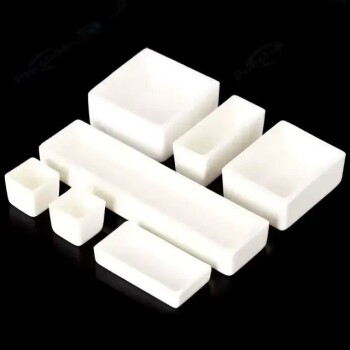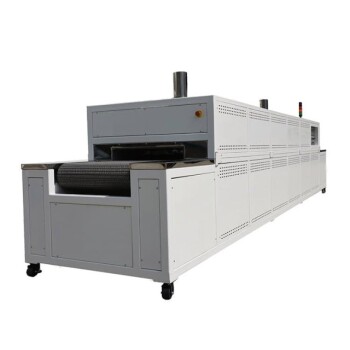Panoramica dei forni a muffola
Tipi e usi
I forni a muffola, spesso definiti forni per ceneri ad alta temperatura, sono apparecchiature di riscaldamento molto versatili che trovano applicazione in una vasta gamma di settori. Questi forni sono indispensabili nei trattamento termico dove facilitano il riscaldamento e il raffreddamento controllato dei materiali per ottenere specifiche trasformazioni fisiche e chimiche. Nel settore farmaceutico i forni a muffola sono utilizzati per processi quali la sterilizzazione e la pirolisi, garantendo la purezza e l'efficacia dei farmaci.
In chimica analitica questi forni svolgono un ruolo cruciale nella preparazione dei campioni, in particolare in tecniche come l'incenerimento, in cui i materiali organici vengono convertiti in residui inorganici per ulteriori analisi. Per analisi della qualità del carbone i forni a muffola vengono utilizzati per determinare il contenuto di ceneri e il potere calorifico dei campioni di carbone, fornendo dati fondamentali per la produzione di energia e le valutazioni ambientali.
La sinterizzazione dei metalli sinterizzazione dei metalli Anche i processi di sinterizzazione dei metalli beneficiano dei forni a muffola, che aiutano a compattare le polveri metalliche in forme solide con proprietà meccaniche migliorate. Allo stesso modo, trattamento termico utilizzano questi forni per alterare la microstruttura dei metalli, migliorandone la durezza, la forza e la resistenza all'usura.
Nel campo della cottura della ceramica i forni a muffola sono essenziali per raggiungere le alte temperature necessarie per vetrificare la ceramica, garantendone la durata e le qualità estetiche. Infine, nella ricerca sperimentale questi forni offrono un mezzo affidabile per condurre esperimenti ad alta temperatura, supportando i progressi in varie discipline scientifiche.
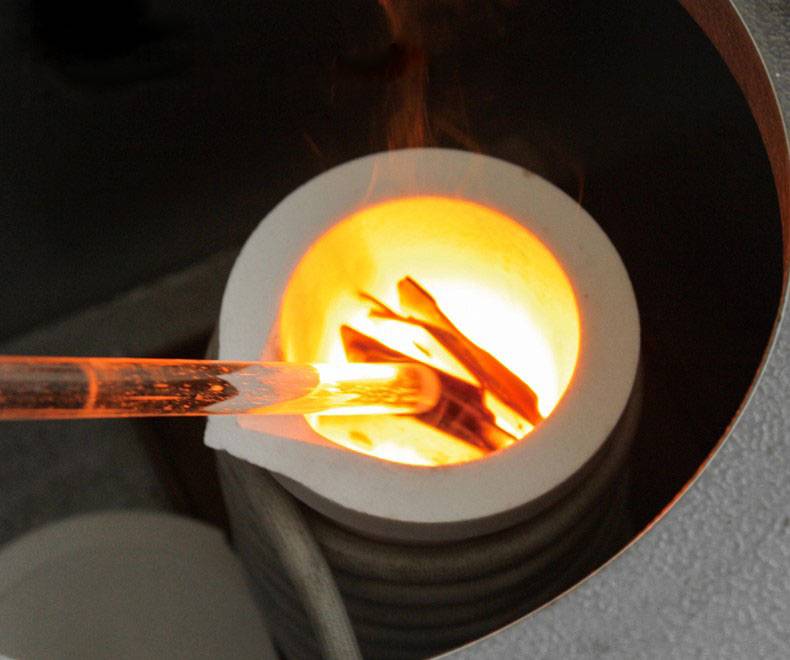
Caratteristiche delle prestazioni
I forni a muffola sono progettati per offrire una serie di prestazioni che soddisfano le diverse esigenze di laboratorio. Questi forni sono in grado di operare in un ampio intervallo di temperature, che spesso supera i 1000°C, rendendoli adatti ad applicazioni ad alta temperatura come la cottura della ceramica e la sinterizzazione dei metalli. La velocità di riscaldamento di questi forni è notevole, consentendo processi termici rapidi che possono ridurre significativamente i tempi dei cicli sperimentali.
Un'altra caratteristica fondamentale è il controllo di precisione della temperatura, che garantisce che il forno possa mantenere temperature esatte, essenziali per gli esperimenti che richiedono un'elevata accuratezza. Questo livello di controllo è spesso ottenuto attraverso sistemi avanzati di controllo della temperatura che offrono una precisione di ±1°C o superiore, rendendoli ideali per la chimica analitica e altre applicazioni sensibili.
I volumi delle camere dei forni a muffola sono personalizzabili, consentendo ai laboratori di scegliere la dimensione appropriata in base alle proprie esigenze specifiche. Sia che si tratti di piccoli campioni o di grandi lotti, la flessibilità del design della camera garantisce che il forno possa adattarsi a varie configurazioni sperimentali.
Alcuni modelli avanzati sono dotati di camere in fibra ceramica a risparmio energetico, che non solo migliorano l'efficienza del forno, ma contribuiscono anche alla sua durata. Queste camere sono progettate per trattenere il calore in modo più efficace, riducendo il consumo energetico e prolungando la durata del forno. Questa combinazione di efficienza energetica e durata rende le camere in fibra ceramica la scelta preferita di molti laboratori.
Caratteristiche principali
I forni a muffola si distinguono per diverse caratteristiche chiave che li rendono adatti a una varietà di applicazioni di laboratorio e industriali. Queste caratteristiche non solo migliorano la funzionalità del forno, ma garantiscono anche sicurezza ed efficienza nel funzionamento.
Una delle caratteristiche principali è il corpo dal design diviso che consente una manutenzione e una riparazione più semplici. Questo design separa la camera di riscaldamento dal pannello di controllo, riducendo il rischio di rischi elettrici e semplificando la sostituzione di componenti come gli elementi riscaldanti.
I controllori intelligenti sono un altro componente fondamentale, che offre automazione e precisione avanzate. Questi controllori possono essere programmati per gestire cicli di riscaldamento complessi, assicurando che il forno operi entro l'intervallo di temperatura e la durata desiderati. Spesso sono dotati di interfacce di facile utilizzo, che facilitano l'impostazione e il monitoraggio del forno anche agli operatori meno esperti.
Gli elementi riscaldanti durevoli sono essenziali per mantenere prestazioni costanti per lunghi periodi. Questi elementi, spesso realizzati con materiali di alta qualità come il carburo di silicio o il disiliciuro di molibdeno, possono resistere alle alte temperature senza degradarsi, garantendo un riscaldamento affidabile e una maggiore durata del forno.
Sistemi avanzati di controllo della temperatura permettono di regolare con precisione la temperatura interna. Questo è fondamentale per gli esperimenti che richiedono condizioni di temperatura precise, come quelli della chimica analitica o della scienza dei materiali. Molti forni moderni offrono un'uniformità di temperatura entro ±1°C, fondamentale per ottenere risultati coerenti.
La sicurezza è una preoccupazione fondamentale in laboratorio, e i forni a muffola sono dotati di diverse caratteristiche di sicurezza . Questi possono includere meccanismi di spegnimento automatico, allarmi di sovratemperatura e pulsanti di arresto di emergenza, per garantire un funzionamento sicuro del forno anche in condizioni di non sorveglianza.
Infine, la possibilità di personalizzare le camere del forno consente di gestire con flessibilità campioni di diverso tipo e dimensione. Sia che abbiate bisogno di una camera piccola per le analisi di routine o di una più grande per la lavorazione di grandi quantità, le opzioni personalizzabili assicurano che il forno possa essere adattato alle esigenze specifiche.
In sintesi, la combinazione di queste caratteristiche rende i forni a muffola una scelta versatile e affidabile per un'ampia gamma di applicazioni di laboratorio.
Selezione del forno a muffola appropriato
Requisiti di temperatura
Quando si sceglie un forno a muffola, è fondamentale considerare l'intervallo di temperatura richiesto per gli esperimenti specifici. Processi diversi richiedono temperature estreme e la comprensione di queste esigenze è essenziale per scegliere l'apparecchiatura giusta.
Ad esempio, l'essiccazione dei materiali richiede in genere temperature moderate, comprese tra i 500 e i 600°C. Questo intervallo garantisce che i materiali vengano essiccati in modo efficiente senza causare degrado termico. D'altra parte, i processi di cottura della ceramica richiedono spesso temperature molto più elevate, che talvolta raggiungono i 1700°C. Queste temperature elevate sono necessarie per ottenere le proprietà strutturali e fisiche desiderate nella ceramica.
| Tipo di processo | Intervallo di temperatura | Importanza del controllo della temperatura |
|---|---|---|
| Essiccazione del materiale | 500-600°C | Garantisce un'essiccazione efficiente senza degrado termico |
| Cottura della ceramica | Fino a 1700°C | Raggiunge le proprietà strutturali e fisiche desiderate |
La comprensione di questi requisiti di temperatura aiuta a scegliere un forno a muffola in grado di soddisfare con precisione le esigenze termiche dei vostri esperimenti, garantendo risultati ottimali e l'efficienza del processo.
Dimensioni della camera del forno
Nella scelta di un forno a muffola, le dimensioni della camera sono un fattore critico che influisce direttamente sull'efficienza e sui risultati degli esperimenti. Le dimensioni della camera devono essere commisurate alle dimensioni e al numero di campioni che si intende trattare. Campioni più grandi, o un volume maggiore di campioni, richiedono una camera di cottura più grande, per poter disporre dello spazio necessario per un riscaldamento e un trattamento uniformi.
Per determinare la dimensione della camera appropriata, iniziate a valutare le dimensioni dei vostri campioni tipici. Considerate se questi campioni sono standard o insolitamente grandi. Ad esempio, se si lavora spesso con pezzi di ceramica di grandi dimensioni o con più campioni contemporaneamente, sarà indispensabile una camera più grande. Al contrario, camere più piccole sono adatte a campioni più compatti o singoli, ottimizzando lo spazio e l'efficienza energetica.
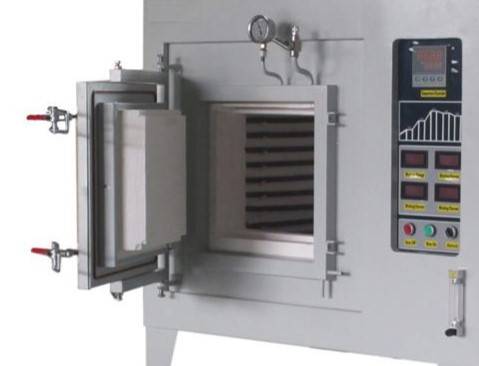
Un altro fattore da considerare è il volume di campioni che trattate regolarmente. I requisiti di produzione più elevati possono richiedere una camera più grande per evitare di ricaricarla frequentemente e mantenere un funzionamento continuo. Questo aspetto è particolarmente importante nei settori in cui la lavorazione in batch è comune, come ad esempio nei laboratori farmaceutici o di chimica analitica.
In sintesi, la scelta delle dimensioni della camera del forno deve essere guidata dalle esigenze specifiche del laboratorio. Valutando attentamente le dimensioni e il volume dei vostri campioni, potrete scegliere un forno a muffola con una camera che garantisca prestazioni ed efficienza ottimali nei vostri esperimenti.
Uniformità della temperatura
Per esperimenti precisi, la scelta di un forno con un'elevata uniformità di temperatura è fondamentale. Questa uniformità si misura in genere in base alla variazione di temperatura nella zona calda, spesso espressa come intervallo (ad esempio, ±20°F). Ad esempio, i forni conformi alla norma AMS 2750D, Classe 4, offrono un'uniformità di temperatura di ±20°F entro un intervallo di 300-600°F. Questo livello di precisione garantisce che tutti i campioni all'interno della camera del forno subiscano un riscaldamento uniforme, essenziale per ottenere risultati riproducibili.
Tuttavia, non tutte le applicazioni richiedono un'uniformità così rigorosa. L'essiccazione di materiali generici, ad esempio, potrebbe non richiedere lo stesso livello di precisione. In questi casi, un forno con specifiche di uniformità di temperatura più ampie potrebbe essere sufficiente, riducendo i costi senza compromettere l'efficacia complessiva del processo.
L'uniformità della temperatura in un forno è largamente influenzata dalla progettazione della zona calda, compresi l'isolamento e la disposizione degli elementi riscaldanti. L'uniformità ottimale si ottiene con una progettazione accurata che riduce al minimo gli spazi vuoti e le aperture, in particolare nei punti critici come le porte di uscita del gas. Inoltre, un sistema di riscaldamento multizona può aiutare a regolare dinamicamente la potenza assorbita, garantendo una distribuzione più uniforme della temperatura in tutta la camera.
| Intervallo di temperatura | Uniformità (±°F) | Classe AMS 2750D |
|---|---|---|
| 300-600°F | 20 | Classe 4 |
| 600-900°F | 15 | Classe 3 |
| 900-2500°F | 10 | Classe 2 |
La comprensione di queste specifiche può guidarvi nella scelta del forno giusto per le vostre specifiche esigenze di laboratorio, bilanciando precisione e praticità.
Velocità di aumento della temperatura
Quando si sceglie un forno a muffola per le proprie esigenze di laboratorio, la velocità di aumento della temperatura è un fattore critico da considerare, soprattutto per i processi che richiedono cicli termici rapidi. Un forno con una rapida velocità di aumento della temperatura può ridurre significativamente il tempo necessario per raggiungere la temperatura operativa desiderata, accelerando così i tempi di sperimentazione e migliorando l'efficienza complessiva.
Per applicazioni come la sinterizzazione rapida o i trattamenti termici rapidi, è indispensabile un forno in grado di raggiungere gradienti di temperatura elevati in un breve periodo. Questi processi termici rapidi richiedono un'apparecchiatura in grado di passare rapidamente dalla temperatura ambiente a quella operativa, assicurando che le proprietà del materiale vengano modificate entro i tempi richiesti.
Tuttavia, è importante notare che non tutti i processi di laboratorio richiedono un rapido aumento della temperatura. La sinterizzazione di routine, ad esempio, potrebbe non richiedere questa caratteristica, poiché spesso comporta un riscaldamento prolungato a temperatura costante. In questi casi, un forno con un tasso di aumento della temperatura più moderato potrebbe essere sufficiente, bilanciando le prestazioni con l'economicità.
| Tipo di processo | Velocità di aumento della temperatura richiesta |
|---|---|
| Processi termici rapidi | Alta (aumento rapido della temperatura) |
| Sinterizzazione di routine | Moderato (aumento costante della temperatura) |
In sintesi, anche se un tasso di aumento rapido della temperatura può essere una svolta per alcune applicazioni di laboratorio, non è universalmente essenziale. Un'attenta considerazione delle vostre specifiche esigenze sperimentali vi aiuterà a determinare l'equilibrio ottimale tra velocità e costi.
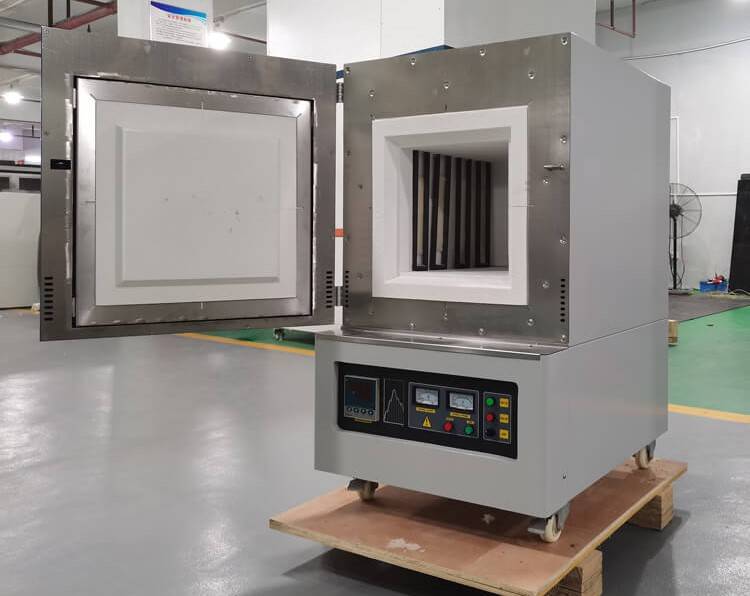
Precisione di controllo
Per gli esperimenti che richiedono un controllo preciso della temperatura, è indispensabile scegliere forni con un'elevata precisione, in genere entro ±1°C o superiore. Questo livello di precisione garantisce che le condizioni termiche rimangano costanti e all'interno dei parametri desiderati, il che è fondamentale per gli esperimenti che coinvolgono materiali sensibili o reazioni chimiche precise.
| Livello di precisione | Applicazioni tipiche |
|---|---|
| ±1°C o superiore | Chimica analitica, ricerca farmaceutica e studi sperimentali che richiedono un controllo preciso della temperatura. |
| ±5°C o superiore | Trattamenti di riscaldamento generali, essiccazione di materiali e processi di sinterizzazione di routine. |
Per contro, i trattamenti di riscaldamento generali, come l'essiccazione dei materiali o la sinterizzazione di routine, potrebbero non richiedere una precisione così rigorosa. Questi processi spesso tollerano una gamma più ampia di variabilità della temperatura, rendendo i forni con un controllo meno preciso sufficienti per le loro esigenze. Pertanto, la scelta del forno deve essere in linea con i requisiti specifici dell'esperimento per garantire efficienza e precisione.
Materiale del forno
Nella scelta di un forno a muffola, il materiale del focolare è un fattore critico che influenza direttamente le prestazioni e la durata del forno. I due materiali principali utilizzati per i focolari sono la fibra ceramica e il mattone refrattario, ciascuno dei quali offre vantaggi distinti adatti a diverse applicazioni.
I focolari in fibra ceramica sono rinomati per le loro capacità di riscaldamento rapido e l'efficienza energetica. Questi focolari sono composti da materiali leggeri e isolanti che consentono rapidi cambiamenti di temperatura, rendendoli ideali per i processi che richiedono cicli di riscaldamento frequenti o rapidi. Il loro design efficiente dal punto di vista energetico contribuisce a ridurre i costi operativi, il che è particolarmente vantaggioso per i laboratori in cui il consumo energetico è una preoccupazione fondamentale.
D'altra parte, i focolari in mattoni refrattari sono costruiti per resistere a temperature estreme e sono più durevoli per le applicazioni ad alta temperatura. Questi focolari sono costruiti con materiali che possono sopportare un'esposizione prolungata al calore elevato senza degradarsi, il che li rende adatti alle operazioni che richiedono un processo continuo ad alta temperatura, come la cottura della ceramica o la sinterizzazione dei metalli. Sebbene richiedano più tempo per riscaldarsi rispetto ai focolari in fibra ceramica, la loro durata superiore garantisce una vita utile più lunga e prestazioni costanti in condizioni difficili.
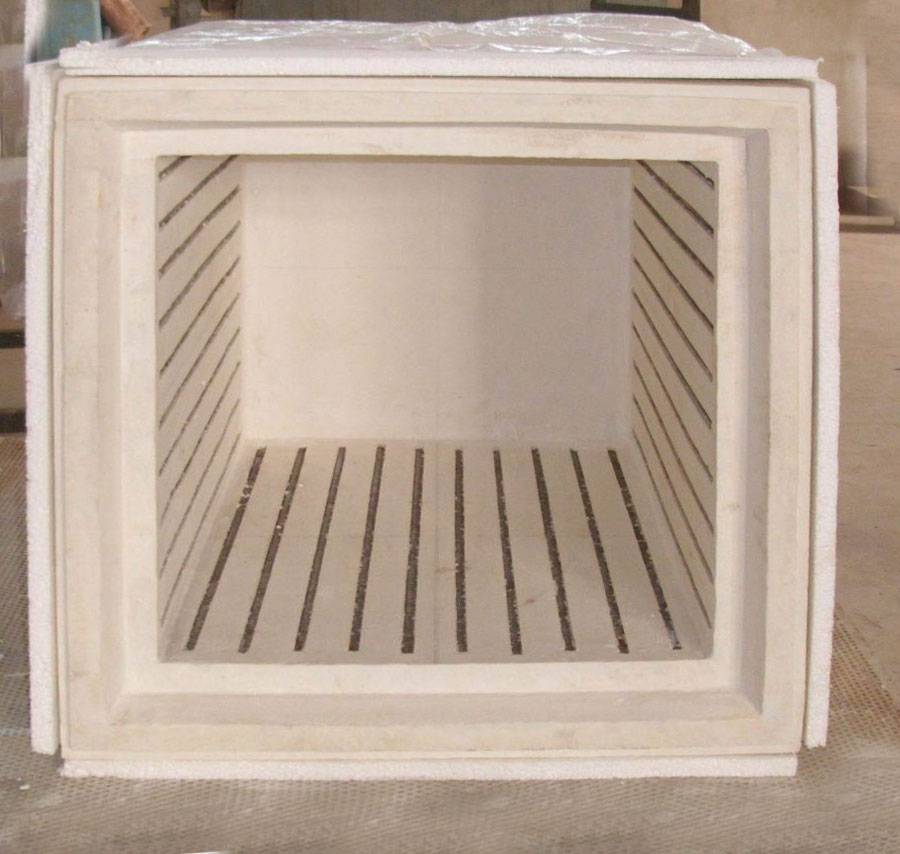
La scelta tra questi materiali dipende dai requisiti specifici dei processi di laboratorio. Per gli esperimenti che richiedono un riscaldamento rapido e un'efficienza energetica, i focolari in fibra ceramica sono la scelta migliore. Tuttavia, per le applicazioni che prevedono operazioni continue ad alta temperatura, i focolari in mattoni refrattari offrono la necessaria robustezza e affidabilità.
Caratteristiche aggiuntive
Quando si sceglie un forno a muffola, è fondamentale considerare le caratteristiche che possono migliorare la funzionalità e l'efficienza degli esperimenti. I controlli programmabili sono particolarmente utili per gli esperimenti che richiedono trattamenti termici precisi e in più fasi. Questi controlli consentono di personalizzare i profili di riscaldamento, assicurando che ogni fase del processo venga eseguita in modo accurato e coerente.
Allarmi automatici sono un'altra caratteristica essenziale, in quanto forniscono notifiche in tempo reale per eventi critici come il raggiungimento di una temperatura specifica, fluttuazioni di potenza o malfunzionamenti del sistema. In questo modo è possibile risolvere tempestivamente qualsiasi problema, riducendo al minimo il rischio di errori sperimentali o di danni alle apparecchiature.
Per gli esperimenti che coinvolgono materiali sensibili o processi critici in termini di tempo funzioni come il monitoraggio remoto e registrazione dei dati possono essere preziose. Queste funzionalità consentono di tracciare e registrare i dati sulla temperatura nel tempo, fornendo preziose informazioni sulle prestazioni del forno e sui risultati degli esperimenti.
Inoltre, prendete in considerazione i forni dotati di tecnologie di risparmio energetico come camere in fibra ceramica che offrono tempi di riscaldamento più rapidi e un consumo energetico inferiore rispetto ai tradizionali focolari in mattoni refrattari. Queste caratteristiche non solo riducono i costi operativi, ma contribuiscono anche a rendere più sostenibile l'ambiente di laboratorio.
Valutando attentamente queste caratteristiche aggiuntive, potrete scegliere un forno a muffola che non solo soddisfi le vostre esigenze sperimentali, ma che migliori anche l'efficienza e l'efficacia complessiva del vostro lavoro di laboratorio.
Prodotti correlati
- Fornace a muffola da 1200℃ per laboratorio
- Fornace a muffola da 1700℃ per laboratorio
- Fornace a muffola da 1400℃ per laboratorio
- Fornace a muffola da 1800℃ per laboratorio
- Crogiolo ceramico avanzato di allumina fine di ingegneria Al2O3 per fornace a muffola da laboratorio
Articoli correlati
- Come scegliere il miglior forno dentale in porcellana
- Forno a muffola: svelare i segreti del riscaldamento uniforme e dell'atmosfera controllata
- Guida completa ai forni a muffola: Tipi, usi e manutenzione
- Esplorare l'uso di un forno a camera per applicazioni industriali e di laboratorio
- Migliorare il lavoro odontoiatrico con un forno dentale di alta qualità





